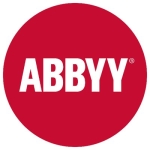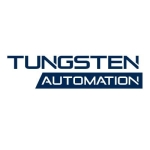- Automating frond end and back end office jobs.
- Automating tiring jobs - Automation Anywhere is used to Automate many jobs that are repetitive.
- To deploy a digital workforce and optimize productivity.
- Report generation.
- Revenue forecasting.
- Beneficial to QA processes.
- Data validation and auditing.
- Data replication and migration.
- Customer Relationship Management and other operational sales activities
RPA helps to Automate these jobs perfectly.
With better technologies and research at its disposal, we will see a decrease in the cost of RPA tools.
With it, the other processes on work, the automation cost will dramatically reduce in the upcoming years.
Moreover, as the number of robotic vendors grows, the RPA licensing will see a significant decline rate in RPA licensing and with more space for changes.
RPA Security:
With more significant responsibilities on the robots’ shoulders, the bigger are the possibilities of a breach and system failure.
There will be an improvement in protection measures from the new types of cyber threats or any internal faults will see an increase due to a constant rise in security requirements.
Better Cloud-Based RPA Platform:
According to “Robotics Process Automation (RPA) – 2018 Annual Report,” Everest Group, 2018; currently over half of all RPA processes (~57%) are attended.
Including cloud-based, unattended RPA represents the remaining 43% (33% on-prem, 10% cloud-based).
The growth of IoT and improved cloud services gives more flexibility and security to Robotic Process Automation.
The cloud supplies unlimited, off-site storage, and on-demand access to data.
Automation at its best:
About 70% to 80% of rule-based processes in a business can be automated. RPA has a good hold in both the back- and front-office with advancements in AI, big data, speech recognition technologies, machine learning, and deep neural networks.
As a consequence of predicted growth in the field of Cloud-based tech and natural learning processes, RPA tech is positioned to be even more integrated, automated, and independent.
Workload management is a cool feature of Automation anywhere.
Automation Anywhere is one of the most popular RPA vendors offering powerful and user-friendly RPA capabilities to automate the business processes that are performed by humans. AA is a web-based management system that includes a control to run end-to-end automated business tasks for companies. Over 500 leading brands across the world use this tool to handle and scale their business processes with near-zero error rates and minimizing operational costs. AA allows building scripts to perform repetitive tasks instead of writing code. They can automate a broad range of chores from basic level Windows configuration steps to the ultimate networking and remote database processes. The three core components in the AA architecture are:
Bot Creator – It allows the developers to create bots to automate their desktop-based applications.
Control room- An application that works as a controller and handles the entire execution and management of clients, scripts, credentials, roles, security, etc.
Bot Runner – A machine that allows us to run the bot. The status of bot execution is reported back to the control room.
The company offers various products to support enterprises in their journey of digital transformation. They are as follows:
Automation Anywhere Enterprise RPA
The product is dedicated for the business user and comprises advanced capabilities to offer an intuitive interface for the business user, bot developer, and automation administrator. This platform is easiest to use, supports to avoid complexity, and ensures fast adoption & rapid deployment. It not only fulfills the requirement of the digital workforce but also be flexible to evolve with the business needs.
2. IQBots
IQBot is a cognitive bot designed to support as well as learn from business users and enable the business user to experience the power of advanced artificial intelligence technologies. Integrated with the automation anywhere enterprise RPA, the IQBot offers enterprise massive gains in productivity, as it includes competence of automating complex tasks involving unstructured data. The table below explains the different types of bots in automation anywhere: Task bot, Meta bot, and IQ bot.
Image1-28
3. Bot Insights
The platform displays statistics and graphs to analyze bot performance in the system. It also allows calculating the time saved in the automation process. It is the first analytics solutions build for bots. Bot Insights tightly integrates the real-time business insights with the digital workforce performance.
4. BotFarm
It is an on-demand enterprise-grade platform for RPA bot. The platform scales the capacity of the digital workforce by deploying bots anytime, anywhere with a single click. It can create, deploy and handle thousands of software bots and can ensure resilience, elasticity, and scalability.
5. Bot Store
The first marketplace for plug and play bots dedicated to business automation initiatives. It enables enterprises to discover, deploy, and mobilize bots, including process bots, application bots, and cognitive bots in a fraction of seconds.
I would like for AA to add an inbuilt debug log that has functionalities to view the values of variables during run time in order to have a point-to-point debugging in case of an error.
I have been using Automation Anywhere for one year.

















